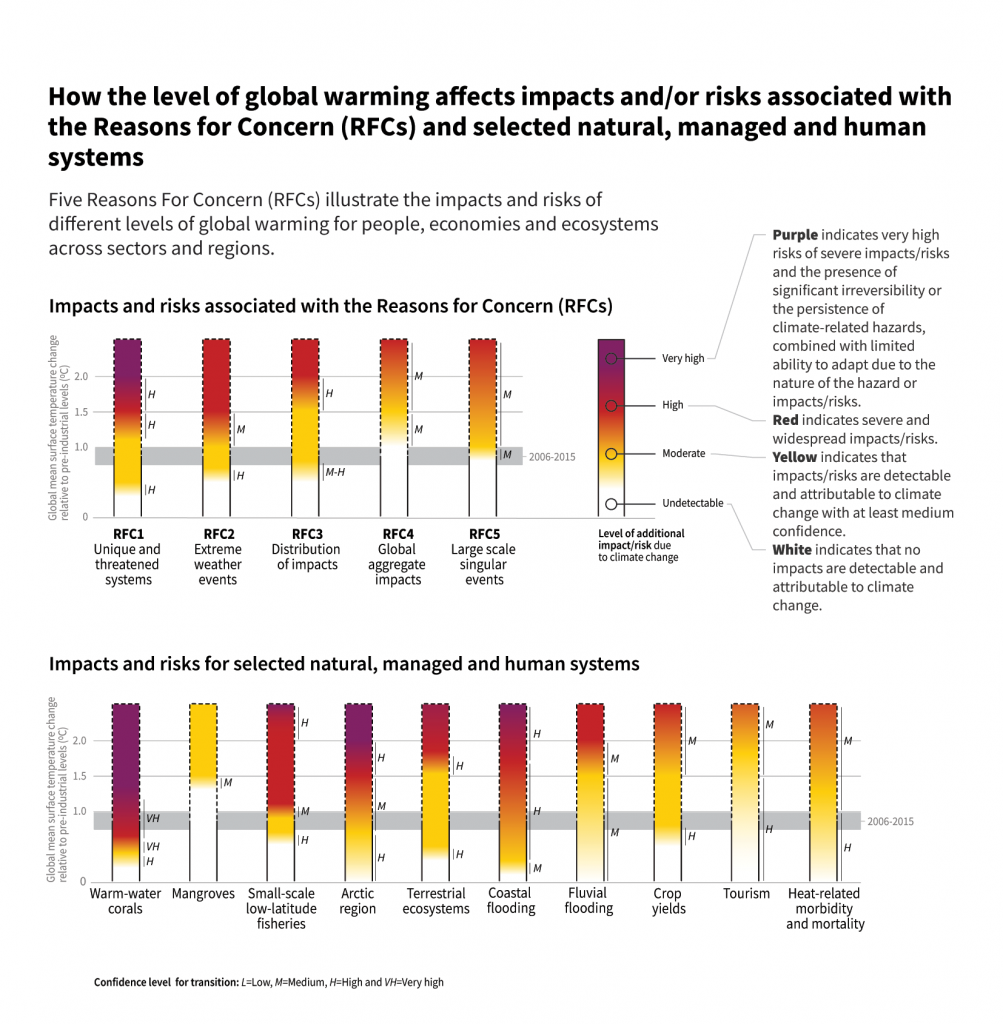
Figure SPM.2
Five integrative reasons for concern (RFCs) provide a framework for summarizing key impacts and risks across sectors and regions, and were introduced in the IPCC Third Assessment Report. RFCs illustrate the implications of global warming for people, economies and ecosystems. Impacts and/or risks for each RFC are based on assessment of the new literature that has appeared. As in AR5, this literature was used to make expert judgments to assess the levels of global warming at which levels of impact and/or risk are undetectable, moderate, high or very high. The selection of impacts and risks to natural, managed and human systems in the lower panel is illustrative and is not intended to be fully comprehensive. {3.4, 3.5, 3.5.2.1, 3.5.2.2, 3.5.2.3, 3.5.2.4, 3.5.2.5, 5.4.1 5.5.3, 5.6.1, Box 3.4}
RFC1 Unique and threatened systems: ecological and human systems that have restricted geographic ranges constrained by climate-related conditions and have high endemism or other distinctive properties. Examples include coral reefs, the Arctic and its indigenous people, mountain glaciers and biodiversity hotspots.
RFC2 Extreme weather events: risks/impacts to human health, livelihoods, assets and ecosystems from extreme weather events such as heat waves, heavy rain, drought and associated wildfires, and coastal flooding.
RFC3 Distribution of impacts: risks/impacts that disproportionately affect particular groups due to uneven distribution of physical climate change hazards, exposure or vulnerability.
RFC4 Global aggregate impacts: global monetary damage, global-scale degradation and loss of ecosystems and biodiversity.
RFC5 Large-scale singular events: are relatively large, abrupt and sometimes irreversible changes in systems that are caused by global warming. Examples include disintegration of the Greenland and Antarctic ice sheets.